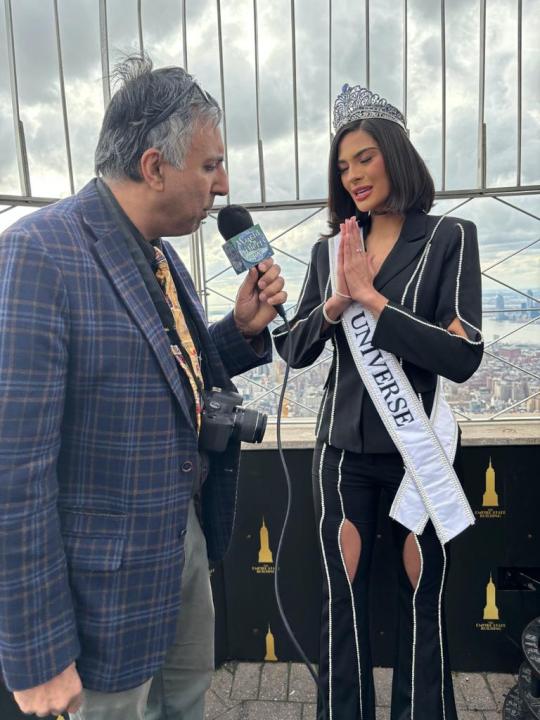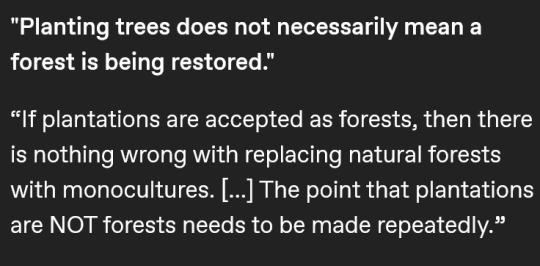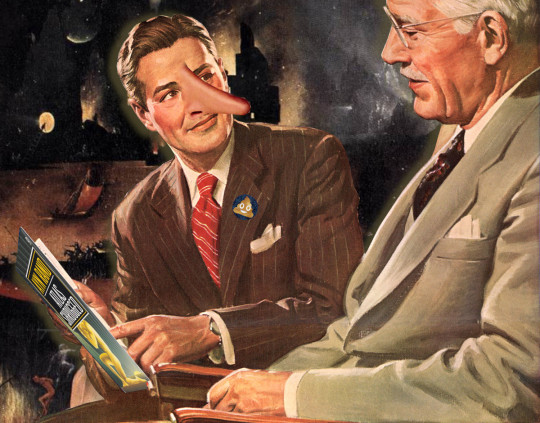#Central America 2023
Explore tagged Tumblr posts
Text
A Trip To Tikal
Absolute rookie error, in all my research I didn’t catch that the ticket office was 17 kilometres from the actual site. When we arrived the colectivo driver asked us if we’d bought tickets online and because we hadn’t we had to get out, buy them, then wait for the next colectivo. The queue was quite big at that time, we arrived at 6am and this seems to be the time that the tour groups rock up.…

View On WordPress
#Backpacking#Central America#Central America 2023#Guatemala#Guatemala 2023#Mayan Ruins#Tikal#Travel#Wanderlust
5 notes
·
View notes
Text
#tiktok#miss universe#2023#nicaragua#Nicaraguan#miss universe 2023#dictatorship#politics#central america
14 notes
·
View notes
Text

Install the app and play two consecutive games. to know More detail… Link
Install the app
#race.#race#tesla crash#crash#vcrash#full race replay 2023#preece#crashes#vcrash americas#nascar full race#movie central free movie#car crash#pc-crash#heat race#wing walker crash#vcrashusa#moon crash#realistic crashes#ski crashes#plane crash#ryan preece#car crashes#free movies#free flight#nascar full race 2023#beamng traffic crash#ski crashes grand prix#beamng random car race#beamng drive realistic crashes#dashcam crash
2 notes
·
View notes
Text

See Exclusive interview with Sheynnis Palacios 1st Miss Universe from Nicaragua 2023- NY 2024 in our World Liberty TV , Beauty Channels @ https://www.worldlibertytv.org/exclusive-interview-with-sheynnis-palacios-1st-miss-universe-from-nicaragua-2023-ny-2024/
#Miss Universe 2023#SheynnisPalacios#World Liberty TV Beauty Blogs#1st Winner From Nicaragua#Central America
0 notes
Text
ISRAEL ATTACK ON IRAN - UPDATES:
A large number of martyrs, including children, ascended as a result of IOF airstrikes on Tehran, Iran.
The IOF announces the beginning of a military operation, where the opening strike targeted Iranian nuclear sites and "dozens of military targets." The zionist entity activates Decree 8, calling up all reservists for military duty across all areas of the zionist military and intelligence. The last time this was activated was October 7th, 2023.
Iranian press sources have announced the martyrdom of Hossein Salami, Commander-in-Chief of the Iranian Revolutionary Guard Corps, and the martyrdom of top nuclear scientists Mohammad Mehdi Tehranchi and Fereydoun Abbasi. In addition, Major General Gholam Ali Rashid, the commander of the central headquarters of the Iranian Armed Forces, was martyred. […] And newest update Major General Mohammed Bagheri, Chief of Staff of the Armed Forces of the Islamic Republic of Iran, has ascended to martyrdom
Glory to the martyrs.
The IOF continues to bomb various areas of Iran now, including nuclear sites. Nearly 300 airstrikes have been recorded tonight.
The spokesman for the Iranian Armed Forces promised that "the zionist entity and America will pay a very heavy price and must expect a severe response."
Massive explosions due to occupation forces bombing of nuclear reactor in Iranian Tabriz:
It can be announced that the weapons used in the attack reached Israel last night and this week. The United States has supplied the air forces with many weapons over the past few months:

Tehran:



442 notes
·
View notes
Text
A local organization here has released a list of books that they feel are imperative to have in the time ahead. The list was not easily shareable, so I copy-pasted it here.
There is no need to read all of these, but one thing you can do that takes little effort is call your library and see if they have them in stock.
If you are moneyed, you can buy some copies and put them in little free libraries.
EDUCATING FOR ADVOCACY BOOK LIST
All books are written by authors from that culture
BOOKS FOR ADULTS
(2024) Be a Revolution: How Everyday People are Fighting Oppression and Changing the World - and How You Can, Too by Ijeoma Oluo
Each chapter discusses how someone is advocating for oppressed populations
and has examples of how others can do the same or similar.
(2024) The Message by Ta-Nehisi Coates
The author travels to Senegal, South Carolina and Palestine and grapples with deep questions and emotions.
(2023) Better Living Through Birding: Notes From a Black Man in the Natural World by Christian Cooper
A memoir of a Black man learning to claim space for himself and others like him.
(2022) Myth America: Historians Take On the Biggest Legends and Lies about Our Past Edited by Kevin M. Kruse and Julian E. Zelizer
The title explains it so well.
(2022) South to America: A Journey Below the Mason Dixon to Understand the Soul of a Nation by Imani Perry
History, rituals, and landscapes of the American South and why they must be understand it in order to understand America.
(2022) Memphis by Tara M. Stringfellow
Tells the story of 3 generations of a Southern Black family in Memphis.
(2021) How the Word is Passed: A Reckoning with the History of Slavery Across America by Clint Smith
An exploration of important monuments and landmarks in the USA that show
how slavery has been foundational in the development and history of our country.
(2021) The Sum of Us: What Racism Costs Everyone and How We Can Prosper Together by Heather McGhee
The title explains it.
(2021) The Seed Keeper by Diane Wilson
Historical fiction telling the story of several generations of a Dakota family
(2020) The Good Immigrant: 26 Writers Reflect on America edited by Nikesh Shukla and Chimene Suleyman
26 authors share their stories of living in the USA.
(2020) Caste: The Origins of Our Discontents by Isabel Wilkerson
Examines the unspoken caste system that has shaped America and shows how we continue to be defined in this way..
(2020) This Is What America Looks Like: My Journey from Refugee to Congresswoman
by Ilhan Omar
This title explains it.
(2019) The 1619 Project: A New Origin Story by Nikole Hannah Jones (among others)
Reframes our understanding of American history by placing slavery and its continuing legacy at the center of our national narrative.
(2019) Things are Good Now by Djamila Ibrahim
Stories of how migrants sort out their lives in foreign lands.
(2018) So You Want to Talk About Race by Ijeoma Oluo
An examination of race in America.
(2018) I’m Still Here by Austin Channing Brown
A memoir telling her journey of learning to love her blackness while navigating America's racial divide.
(2018) If They Come for Us by Fatimah Asghar
Poetry that captures the experience of being a Pakistani Muslim woman in contemporary America, while exploring identity, violence, and healing.
(2016) Stamped from the Beginning: The Definitive History of History of Racist Ideas in America by Ibram X. Kendi
Traces the history of Black America.
(2015) Between the World and Me by Ta-Nehisi Coates
A memoir, in the form of a letter to his young son, telling his personal experiences with racism and violence in the United States.
(2015) My Seneca Village by Marilyn Nelson
Poetry and information about Seneca Village – a multi-racial, multi-ethnic neighborhood in the center of Manhattan (Central Park ) that thrived in the mid-19th century.
(2014) An Indigenous Peoples' History of the United States by Roxanne Dunbar-Ortiz
Tells the 400+ years of US history, from the perspective of Indigenous peoples
(2013) Braiding Sweetgrass: Indigenous Wisdom Scientific Knowledge, and the Teaching of Plants by Robin Wall Kimmerer
Explores the place of plants and botany in both Indigenous and Western life.
(2010) The Warmth of Other Suns: The Epic Story of America’s Great Migration by Isabel Wilkerson
Follows the stories of three Black Americans’ migration journeys from Mississippi, Florida and Louisiana.
(2010) The New Jim Crow: Mass Incarceration in the Age of Colorblindness
By Michelle Alexander
Explains how we haven’t ended, but have redesigned, the caste system in the U.S.
(1972) Lame Deer, Seeker of Visions by John (Fire) Lame Deer and Richard Erdoes
Told by Lame Deer, a Lakota medicine man, this memoir teaches the history of Indigenous people in the USA.
BOOKS FOR GRADES K-12
GRADES 7 - 12
(2021) Firekeeper’s Daughter by Angeline Boulley
The novel's main character is a young woman with a French mother and an Ojibwe father, who often feels torn between cultures.
(2021) The 1619 Project: Born on the Water by Nikole Hannah-Jones and Renée Watson
Illustrated by Nikkolas Smith
Tells the story and consequences of American slavery in verse.
(2020) Stamped: Racism, Antiracism, and You by Jason Reynolds and Ibram X. Kendi
Shorter and appropriate for middle and high schoolers.
(2020) All Boys Aren’t Blue by George M. Johnson
Series of personal essays about the author’s life growing up as a gay, black man.
(2020) Dictionary for a Better World: Poems, Quotes, and Anecdotes from A to Z by Irene Latham and Charles Waters Illustrated by Mehrdokt Amini
Explained in title.
(2020) Woke: A Young Poet’s Call to Justice by Mahogany L. Browne with Elizabeth Acevedo and Olivia Gatewood Illustrated by Theodore Taylor III
Poetry about fighting for racial justice through joy and passion.
(2020) Be Amazing: A History of Pride by Desmond Is Amazing Illustrated by Dylan Glynn
The history of Pride, with bold illustrations, focusing on the importance of embracing one’s own uniqueness and tuning out the haters.
(2020) Dear Justyce (Dear Martin #2) by Nic Stone
Continues the story of Justyce from Dear Martin in a series of flashbacks and letters.
(2020) Punching the Air by Ibi Zoboi and Yusef Salaam
A novel in verse about a boy who is wrongfully incarcerated.
(2019) Gender Queer: A Memoir by Maia Kobab
The author tells the story of life as a nonbinary person in graphic novel form.
(2019) An Indigenous Peoples' History of the United States for Young People original book by Roxanne Dunbar-Ortiz adapted by Debbie Rees and Jean Mendoza
Shorter and appropriate for middle and high schoolers
(2017) Sea Prayer by Khalad Hosseini Illustrated by Dan Williams
Written as a poetic letter, from father to son, this is a story of the journey of refugees.
(2017) Dear Martin (Dear Martin #1) by Nic Stone
A story of the realities of a Black teen living in America.
(2015) All American Boys by Jason Reynolds and Brendan Kiely
From the perspective of two teenage boys, one Black and one White, a story is told with the realization that racism and prejudice are still alive and well.
(2015) Beyond Magenta: Transgender and Nonbinary Teens Speak Out by Susan Kuklin
The author interviewed six transgender for gender-neutral young adults and lets
them tell their story.
(2011) Heart and Soul: The Story of America and African Americans written and illustrated by Kadir Nelson
The title explains it well
GRADES 4 - 6
(2023) An American Story by Kwame Alexander illustrated by Dare Coulter
Tells the story, poetically and honestly, about American slavery
(2023) Step by Step!: How the Lincoln School Marchers Blazed a Trail to Justice
by Debbie Rigaud and Carlotta Penn illustrated by Nysha Pierce
Tells the story of a group of Black mothers and children and their two-year march to integrate an Ohio elementary school.
(2022) Say Their Names by Caroline Brewer illustrated by Adrian Brandon
A young Black girl leads a #BlackLivesMatter protest march.
(2021) Stamped (For Kids): Racism, Antiracism, and You by Jason Reynolds and Ibram X. Kendi.
Shorter, more kid friendly version of Stamped from the Beginning.
(2021) Unspeakable: The Tulsa Race Massacre by Carole Boston Weatherford illustrated by Floyd Cooper
Traces the history of this African-American ‘Wall Street District’ and its destruction by White supremacists.
(2016). I Dissent: Ruth Bader Ginsburg Makes Her Mark by Debbie Levy illustrated by Elizabeth Baddeley
The life and work of RBG told in picture book form.
(2008) Silent Music: A Story of Baghdad written and illustrated by James Rumford
Ancient and recent history of Baghdad from the perspective of a young boy.
(2005) Show Way by Jacqueline Woodson illustrated by Hudson Talbott
Traces the history of the ‘show way’ quilt from slavery through freedom.
(2005) My Name is Bilal by Asma Mobin-Uddin illustrated by Barbara Kiwak
Muslim-American student experiencing religious prejudice.
(2005). Amelia to Zora: Twenty-Six Women Who Changed the World by Cynthia Chin-Lee Ilustrated by Megan Halsey and Sean Addy
An alphabet book that teaches about the extraordinary lives of 26 women.
(1978). The Other Way to Listen by Byrd Baylor and Peter Parnall
Helps children learn about indigenous cultures.
GRADES PRE-K - 3
(2023) These Olive Trees: A Palestinian Family’s Story written and illustrated by Aya Ghanameh
A story of a young girl and her family in Nablus, Palestine, 1967
(2020). Antiracist Baby by Ibram X. Kendi illustrated by Ashley Lukashvsky
Teaches young children how to be an antiracist.
(2016). When We Were Alone by David A. Robertson and Julie Flett
A young, indigenous girl learns about her grandmother’s experience in a
residential school.
(2013). A is for Activist by Innosanto Nagara (board book)
An ABC book that teaches children about being an activist.
673 notes
·
View notes
Text
The Mamas & the Papas - California Dreamin' 1965
The Mamas & the Papas was an American folk rock vocal group that recorded and performed from 1965 to 1968, with a brief reunion in 1971. The group was a defining force in the music scene of the counterculture of the 1960s. Formed in New York City, the group consisted of Americans John Phillips, Cass Elliot, Michelle Phillips, and Canadian Denny Doherty. Their sound was based on vocal harmonies arranged by John Phillips, who adapted folk to the new beat style of the early 1960s. The Mamas & the Papas released five studio albums and 17 singles, six of which made the Billboard top 10, and has sold close to 40 million records worldwide. After their break-up in 1968, the band reunited briefly to record the album People Like Us in 1971 but split again shortly after the album was released. They were inducted into the Rock and Roll Hall of Fame in 1998 for their contributions to the music industry.
"California Dreamin'" is a song written by John and Michelle Phillips in 1963 and first recorded by Barry McGuire. The best-known version is by the Mamas & the Papas, who sang backup on the original version and released it as a single in December 1965. The song peaked at number 4 in March on both the Billboard Hot 100 and Cashbox. It reached number 23 on the UK charts upon its original release, and re-charted after its use in a Carling Premier commercial in 1997, peaking at number 9. It was certified three-times platinum by the Recording Industry Association of America in June 2023 and was inducted into the Grammy Hall of Fame in 2001. In 2021, Rolling Stone placed the song at number 420 in its "500 Greatest Songs of All Time" list. The song is used repeatedly in the 1994 Hong Kong film Chungking Express as a central plot point and a cover by the Beach Boys was used on season 4 of Stranger Things.
"California Dreamin'" received a total of 90,6% yes votes!
youtube
673 notes
·
View notes
Text
From the article:
Latin America and the Caribbean has seen a huge expansion of distributed energy, driven mostly by Brazil, Mexico, Puerto Rico, the Dominican Republic, Chile and Colombia. The region went from just one gigawatt installed capacity of distributed systems in 2017 to 31.8 GW by 2023, the year with the latest available data, according to energy consultancy Onred. Virtually all of these installations use solar panels. Distributed energy has thus become a major driver of Latin America’s energy transition, along with large, utility-scale solar and wind farms. The region has long been established as a clean electricity leader thanks to its hydropower resources, and the International Energy Agency estimates the growth in its renewables will continue, with their share of the electricity supply projected to increase from just over 60% today to 80% by 2050. “Large energy installations are not enough to meet climate goals. Distributed energy enables users en masse to participate in the energy transition,” says Ignacio Romero, co-founder of Onred. “It is a cultural change after decades of an energy sector operated in a centralised manner by large players.”
#solar panels#solar energy#renewable energy#clean energy#green energy#solar revolution#solarpunk#hope#hopepunk#good news#climate change#global warming#environment#ecology#climate anxiety#climate grief
164 notes
·
View notes
Text

Despite its green image, Ireland has surprisingly little forest. [...] [M]ore than 80% of the island of Ireland was [once] covered in trees. [...] [O]f that 11% of the Republic of Ireland that is [now] forested, the vast majority (9% of the country) is planted with [non-native] spruces like the Sitka spruce [in commercial plantations], a fast growing conifer originally from Alaska which can be harvested after just 15 years. Just 2% of Ireland is covered with native broadleaf trees.
Text by: Martha O’Hagan Luff. “Ireland has lost almost all of its native forests - here’s how to bring them back.” The Conversation. 24 February 2023. [Emphasis added.]
---
[I]ndustrial [...] oil palm plantations [...] have proliferated in tropical regions in many parts of the world, often built at the expense of mangrove and humid forest lands, with the aim to transform them from 'worthless swamp' to agro-industrial complexes [...]. Another clear case [...] comes from the southernmost area in the Colombian Pacific [...]. Here, since the early 1980s, the forest has been destroyed and communities displaced to give way to oil palm plantations. Inexistent in the 1970s, by the mid-1990s they had expanded to over 30,000 hectares. The monotony of the plantation - row after row of palm as far as you can see, a green desert of sorts - replaced the diverse, heterogenous and entangled world of forest and communities.
Text by: Arturo Escobar. "Thinking-Feeling with the Earth: Territorial Struggles and the Ontological Dimension of the Epistemologies of the South." Revista de Antropologia Iberoamericana Volume 11 Issue 1. 2016. [Emphasis added.]
---
But efforts to increase global tree cover to limit climate change have skewed towards erecting plantations of fast-growing trees [...] [because] planting trees can demonstrate results a lot quicker than natural forest restoration. [...] [But] ill-advised tree planting can unleash invasive species [...]. [In India] [t]o maximize how much timber these forests yielded, British foresters planted pines from Europe and North America in extensive plantations in the Himalayan region [...] and introduced acacia trees from Australia [...]. One of these species, wattle (Acacia mearnsii) [...] was planted in [...] the Western Ghats. This area is what scientists all a biodiversity hotspot – a globally rare ecosystem replete with species. Wattle has since become invasive and taken over much of the region’s mountainous grasslands. Similarly, pine has spread over much of the Himalayas and displaced native oak trees while teak has replaced sal, a native hardwood, in central India. Both oak and sal are valued for [...] fertiliser, medicine and oil. Their loss [...] impoverished many [local and Indigenous people]. [...]
India’s national forest policy [...] aims for trees on 33% of the country’s area. Schemes under this policy include plantations consisting of a single species such as eucalyptus or bamboo which grow fast and can increase tree cover quickly, demonstrating success according to this dubious measure. Sometimes these trees are planted in grasslands and other ecosystems where tree cover is naturally low. [...] The success of forest restoration efforts cannot be measured by tree cover alone. The Indian government’s definition of “forest” still encompasses plantations of a single tree species, orchards and even bamboo, which actually belongs to the grass family. This means that biennial forest surveys cannot quantify how much natural forest has been restored, or convey the consequences of displacing native trees with competitive plantation species or identify if these exotic trees have invaded natural grasslands which have then been falsely recorded as restored forests. [...] Planting trees does not necessarily mean a forest is being restored. And reviving ecosystems in which trees are scarce is important too.
Text by: Dhanapal Govindarajulu. "India was a tree planting laboratory for 200 years - here are the results." The Conversation. 10 August 2023. [Emphasis added.]
---
Nations and companies are competing to appropriate the last piece of available “untapped” forest that can provide the most amount of “environmental services.” [...] When British Empire forestry was first established as a disciplinary practice in India, [...] it proscribed private interests and initiated a new system of forest management based on a logic of utilitarian [extraction] [...]. Rather than the actual survival of plants or animals, the goal of this forestry was focused on preventing the exhaustion of resource extraction. [...]
Text by: Daniel Fernandez and Alon Schwabe. "The Offsetted." e-flux Architecture (Positions). November 2013. [Emphasis added.]
---
At first glance, the statistics tell a hopeful story: Chile’s forests are expanding. […] On the ground, however, a different scene plays out: monocultures have replaced diverse natural forests [...]. At the crux of these [...] narratives is the definition of a single word: “forest.” [...] Pinochet’s wave of [...] [laws] included Forest Ordinance 701, passed in 1974, which subsidized the expansion of tree plantations [...] and gave the National Forestry Corporation control of Mapuche lands. This law set in motion an enormous expansion in fiber-farms, which are vast expanses of monoculture plantations Pinus radiata and Eucalyptus species grown for paper manufacturing and timber. [T]hese new plantations replaced native forests […]. According to a recent study in Landscape and Urban Planning, timber plantations expanded by a factor of ten from 1975 to 2007, and now occupy 43 percent of the South-central Chilean landscape. [...] While the confusion surrounding the definition of “forest” may appear to be an issue of semantics, Dr. Francis Putz [...] warns otherwise in a recent review published in Biotropica. […] Monoculture plantations are optimized for a single product, whereas native forests offer [...] water regulation, hosting biodiversity, and building soil fertility. [...][A]ccording to Putz, the distinction between plantations and native forests needs to be made clear. “[...] [A]nd the point that plantations are NOT forests needs to be made repeatedly [...]."
Text by: Julian Moll-Rocek. “When forests aren’t really forests: the high cost of Chile’s tree plantations.” Mongabay. 18 August 2014. [Emphasis added.]
#abolition#ecology#imperial#colonial#landscape#haunted#indigenous#multispecies#interspecies#temporality#carceral geography#plantations#ecologies#tidalectics#intimacies of four continents#archipelagic thinking#caribbean
2K notes
·
View notes
Text
More Belizian Mayan Shit
The day after the ATM Cave we booked to go to Barton Creek which is another Mayan cave but you canoe through this one. You can also take photos which is cool. We went with Maya Walks again and we were driven in a gloriously air conditioned pick up truck to the cave entrance where Tarrant was informed she’d be paddling. Not both of us, this wasn’t a sea kayak, just her. Well she’s stronger than me…

View On WordPress
#Backpacking#Barton Creek#Belize#Belize 2023#Big Rock Falls#Central America#Central America 2023#San Ignacio#Travel#Wanderlust#Xunantunich
2 notes
·
View notes
Text

From my series ‘Chiquito’
Found photography and reused fruit stickers from South and Central America, 2023
#photography#mixed media#2020s#collage#rephotography#contemporary art#queer art#queer artist#julian hammond santander#chiquito
698 notes
·
View notes
Text
— Recent giant anteater sightings in Rio Grande do Sul state indicate the species has returned to southern Brazil, where it had been considered extinct for more than a century.
— Experts concluded that the giant anteater ventured across the border from the Iberá Park in northeastern Argentina where a rewilding project has released around 110 individuals back into the habitat.
— The sightings emphasize the importance of rewilding projects, both to restore animal populations in specific regions and help ecosystems farther afield.
— Organizations across Brazil are working to protect and maintain current giant anteater populations, including rallying for safer highways to prevent wildlife-vehicle collisions that cause local extinctions.
Playing back hours of footage from a camera trap set in Espinilho State Park in the south of Brazil in August 2023, Fábio Mazim and his team banked on possible sightings of the maned wolf or the Pantanal deer and had their fingers crossed for a glimpse of a Pampas cat (Leopardus pajeros), one of the most threatened felines in the world.
What they didn’t expect to see was an animal long presumed extinct in the region. To their surprise, the unmistakable long snout and bushy tail of a giant anteater ambled into shot.
"We shouted and cried when we saw it,” the ecologist from the nonprofit Pró-Carnívoros Institute told Mongabay. “It took a few days to grasp the importance of this record. A sighting of a giant anteater was never, ever expected.”
Last seen alive in the southwest of the Rio Grande do Sul state in 1890, the giant anteater (Myrmecophaga tridactyla) has since been spotted 11 times since August 2023, although the scientists are unsure whether it’s the same one or different individuals. However, the sightings confirm one clear fact: The giant anteater is back.
It's a huge win for the environment. Giant anteaters play an important role in their ecosystems, helping to control insect numbers, create watering holes through digging and are prey for big cats such as jaguars and pumas.
The habitat of the giant anteater stretches from Central America toward the south cone of Latin America.
Its conservation status is “vulnerable,” although it is considered extinct in several countries, including El Salvador, Guatemala and Uruguay, as well as specific regions such as the states of Rio de Janeiro, Espirito Santo, Santa Catarina and (until now) Rio Grande do Sul in Brazil and the Cordoba and Entre Rios regions in Argentina.
In the last six months, the giant anteater was spotted on camera 11 times in the Espinilho State Park in the state of Rio Grande do Sul in Brazil. It was the first time in 130 years that the species has been seen alive there.
Yet not only is it a triumph for conservationists to see these animals returning to Brazilian biomes, it’s also a surprising mark of success for a rewilding program about 150 kilometers (93 miles) away in neighboring Argentina.

Rewilding Argentina’s biomes
Iberá National Park in Corrientes province in northeastern Argentina is a 758,000-hectare (1.9 million-acre) expanse of protected land comprising a part of the Iberá wetlands with its swaths of grasslands, marshes, lagoons and forests. The region was once home to just a handful of giant anteaters after habitat loss, hunting and vehicle collisions decimated the population.
Since 2007, the NGO Rewilding Argentina, an offspring of the nonprofit Tompkins Conservation, has been reintroducing the species back to the area, most individuals being orphaned pups rescued from vehicle collisions or poaching.
So far, they have released 110 giant anteaters back into the wild. Nowadays, several generations inhabit the park, transforming it from “a place of massive defaunation to abundance,” Sebastián Di Martino, director of conservation for Rewilding Argentina, was quoted as saying in an official statement.
The project has been so successful that the giant anteaters appear to be venturing farther afield and moving to new territories beyond national borders, such as Espinilho State Park in Brazil’s Rio Grande do Sul region...
Experts now hope that a giant anteater population can reestablish itself naturally in Espinilho State Park without the need for human intervention.
“The giant anteater returning to Rio Grande do Sul shows the success of the work done in Argentina and how it’s viable, possible and important to do rewilding and fauna reintroduction projects,” Mazim said. “It is also an indication that the management of conservation units and also the agricultural areas of the ecosystems are working,” he added. “Because if large mammals are coming from one region and settling in another, it is because there is a support capacity for them. It is an indication of the health of the environment.”
-via GoodGoodGood, via May 25, 2024
#anteater#giant anteater#brazil#brasil#argentina#rewilding#conservation#conversation news#nature#biodiversity#environment#ecosystem#ecology#good news#hope
617 notes
·
View notes
Text
Late on a Sunday night in June of 2023, a woman named Carlishia Hood and her fourteen-year-old son, an honor student, pulled into Maxwell Street Express, a fast-food joint in West Pullman, on the far South Side of Chicago. Her son stayed in the car. Hood went inside. Maxwell is a no-frills place—takeout-style, no indoor seating. It’s open twenty-four hours a day. Hood asked for a special order—without realizing that at Maxwell, a busy place, special orders are frowned upon. The man behind her in line got upset; she was slowing things down. His name was Jeremy Brown. On the street, they called him the Knock-Out King. Brown began to gesticulate, his arms rising and falling in exasperation. He argued with Hood, growing more agitated. Then he cocked his fist, leaned back to bring the full weight of his body into the motion, and punched her in the head.
When the argument had started, Hood texted her son, asking him to come inside. Now he was at the door, slight and tentative in a white hoodie. He saw Brown punch his mother a second time. The boy pulled out a revolver and shot Brown in the back. Brown ran from the restaurant. The boy pursued him, still firing. Brown died on the street—one of a dozen men killed by gunfire in Chicago that weekend.
In the remarkable new book “Unforgiving Places” (Chicago), Jens Ludwig breaks down the Brown killing, moment by moment. Ludwig is the director of the University of Chicago Crime Lab, and he uses as a heuristic the psychologist Daniel Kahneman’s version of the distinction between System 1 and System 2 thinking. According to Kahneman, these are the two cognitive modes that all human beings toggle between. The first is fast, automatic, and intuitive. The second is slow, effortful, and analytical. Ludwig’s innovation is to apply the dichotomy to criminal acts. A System 2 crime might be a carefully planned robbery, in which the assailant stalks and assesses his victims before attacking them. This is what criminologists call instrumental violence: acts, Ludwig writes, “committed in order to achieve some tangible or ‘instrumental’ goal (getting someone’s cash or phone or watch or drug turf), where violence is a means to some other, larger end.” A System 1 crime, by contrast, is an act of what Ludwig calls “expressive violence”—aimed not at gaining something tangible but at hurting someone, often in a sudden burst of frustration or anger.
The central argument of “Unforgiving Places” is that Americans, in their attempts to curb crime, have made a fundamental conceptual error. We’ve assumed that the problem is instrumental violence—and have fashioned our criminal-justice system around that assumption. But the real problem is expressive violence. The ongoing bloodshed in America’s streets is just Maxwell Street Express, over and over again.
For the better part of a generation, the study of American crime has been in a state of confusion. The first destabilizing event came in the nineteen-nineties, with a sudden and sustained drop in urban crime across the United States, most notably in New York City. At the time, the prevailing view was that gun violence was deeply rooted—a product of entrenched racism, poverty, and despair. But, if that were true, how did New York’s homicide rate fall by more than half in the span of a single decade? Deeply rooted problems aren’t supposed to resolve themselves so swiftly.
The conventional wisdom adapted. Attention turned to shifts in policing—specifically, the rise of proactive tactics in the nineties. The N.Y.P.D.’s stop-and-frisk strategy, aimed at getting guns off the street, was credited with driving the crime decline. But then, in 2013, a federal judge ruled that the police’s stop-and-frisk practices violated constitutional rights. And what happened? Crime continued to fall. New York got safer even though the police stopped doing the things that we thought were making the city safer. It made no sense.
Then there were those who argued that violent crime was a matter of individual pathology: stunted development, childhood trauma, antisocial tendencies. Look closely at the criminal, we were told. But research—from criminologists like David Weisburd and Lawrence W. Sherman—showed that, in city after city, crime was hyperconcentrated. A handful of blocks accounted for a disproportionate share of violence, and those blocks stayed violent, year after year. In other words, the problem wasn’t people. It was place.
Last summer, I was given a tour of a low-income neighborhood in Philadelphia by the Pennsylvania Horticultural Society. Its program Transforming Vacant Lots has led a concerted effort to clean up thousands of vacant lots scattered across the city. The approach is simple: clear the weeds, pick up the trash, plant a lawn, put up a post-and-rail fence. The initiative works on over twelve thousand lots, and the results are striking. What once looked like a struggling neighborhood now resembles, at a glance, a middle-class one.
What’s remarkable, though, isn’t just the aesthetics. It’s that the neighborhoods where these lots have been turned into green spaces have seen a twenty-nine-per-cent drop in gun violence. Twenty-nine per cent! The people haven’t changed. The pathologies haven’t changed. The same police force still patrols the neighborhood. The only new variable is that someone comes by to mow the lawn once or twice a month. As economists like to say: How do you model that?
This is the puzzle that Ludwig sets out to solve in “Unforgiving Places.” His answer is that these episodes confound us only because we haven’t appreciated how utterly different System 1 criminality is from that of System 2. System 1 thinking is egocentric: it involves, Ludwig writes, interpreting “everything through the lens of ‘What does this have to do with me?’ ” It depends on stark binaries—reducing a range of possibilities to a simple yes or no—and, as he notes, it “focuses more on negative over positive information.” In short, it’s wired for threats. System 1 catastrophizes. It imagines the worst.
Brown’s encounter with Carlishia Hood pushed him into System 1 mode. He made an immediate egocentric assumption: if he knew that special orders were a norm violation, then Hood must know, too. “Given that System 1 assumption,” Ludwig explains, “from there it is natural that Brown believed the person in front of him was deliberately holding things up.”
Hood, meanwhile, didn’t know about the special-order taboo, so she was operating under her own egocentric assumptions. She “knew she wasn’t being disrespectful and deliberately trying to hold up everyone else in line, so the curse of knowledge led her System 1 to assume that Brown surely also knew that,” Ludwig writes. “So why was he getting so bent out of shape? She didn’t mean to be inconsiderate to the people behind her in line; she just wanted the Maxwell Street Express people to change whatever it was that she wanted changed on the burger.” Neither had the cognitive space to consider that they were caught in a misunderstanding. They were in binary mode: I’m right, so you must be wrong. From there, things escalated:
Hood says to her son, who’s standing behind Brown, “Get in the car.”
Brown seems to think that comment is directed at him—another misreading of the situation.“WHO?!?” he says. “Get in the CAR?!?”
Hood says something that’s hard to make out from the video.
Brown says, “Hey lady, lady, lady, lady. GET YOUR FOOD. GET YOUR FOOD. If you say one more thing, I’m going to KNOCK YOU OUT.” You can see his right fist, clenching and unclenching, over and over.
She says something that is again hard to make out on the video.
He says, “Oh my God I SAID if you say one more thing, I’m going to knock you out.”
At which point he punches her—hard.
Hood’s son is standing in the doorway, watching the assault of his mother. Had he been in System 2 mode, he might have paused. He might have asked for help. He might have called 911. He could have weighed the trade-offs and thought, Yes, it’s unbearable to watch my mother being beaten. But, if I kill this man, I could spend years in prison. But he’s filled with adrenaline. He shifts into catastrophizing mode: There is nothing worse than seeing my mother get pummelled by a stranger. Brown punches her again—and again. The boy shoots him in the back. Brown runs. Hood tells her son to follow him. There is nothing worse than letting him get away. Still in System 1, the boy fires again. Brown collapses in the street.
Ludwig argues that this is what most homicide looks like. Much of what gets labelled gang violence, he says, is really just conflict between individuals who happen to be in gangs. We misread these events because we insist on naming the affiliations of the combatants. Imagine, he suggests, if we did this for everyone: “ ‘This morning by Buckingham Fountain, a financial analyst at Morningstar killed a mechanic for United Airlines.’ Naturally you’d think the place of employment must be relevant to understanding the shooting, otherwise why mention it at all?”
The “super-predator”—the remorseless psychopath of television dramas—turns out to be rare. The mass shooter, meticulously assembling his arsenal, is a statistical anomaly. The professional hit man is mostly a literary invention. “A careful look at twenty years of U.S. murder data collected by the F.B.I.,” Ludwig writes, “concluded that only 23 percent of all murders were instrumental; 77 percent of murders—nearly four of every five—were some form of expressive violence.”
The Chicago Police Department estimates that arguments lie behind seventy to eighty per cent of homicides. The numbers for Philadelphia and Milwaukee are similar. And that proportion has held remarkably steady over time. Drawing on data from Houston in 1969, the sociologist Donald Black concluded that barely more than a tenth of homicides occurred during predatory crimes like burglary or robbery. The rest, he found, arose from emotionally charged disputes—over infidelity, household finances, drinking, child custody. Not calculated acts of gain, in other words, but eruptions rooted in contested ideas of right and wrong.
Ludwig’s point is that the criminal-justice system, as we’ve built it, fails to reckon with this reality. We’ve focussed on the signalling function of punishment—on getting the deterrents right, offering the proper mixture of carrots and sticks to influence rational actors. Mass incarceration, which swept the country in the late twentieth century, rested on the assumption that a person spoiling for a fight with another person was weighing costs: that the difference between ten years and twenty-five would matter. But was Jeremy Brown calculating odds when he punched Carlishia Hood? Was her son performing a Bayesian analysis as he ran from the restaurant, gun in hand?
This misapprehension, he argues, is why the American experience of crime so often seems baffling. Murders are volatile—a city really can go from dangerous to safe overnight—because the behavior driving most homicides is volatile.
Why did crime in New York continue to fall after the N.Y.P.D. ended stop-and-frisk? Because what makes police officers effective isn’t how many people they stop or arrest—it’s how many arguments they interrupt or defuse, ideally without resorting to handcuffs or charges.
Why does crime seem more related to places than to people? Because some places are simply better at de-escalation than others. Imagine Maxwell Street Express in a more stable neighborhood, with a core of regulars—people connected to one another, who know something about Jeremy Brown and his temper. Another customer might have stepped in and said, “Hey, wait a minute, Jeremy. Cool it. I don’t think the lady knows how this restaurant works.”
And why did Philadelphia’s vacant-lot program work so well? Because, when an empty lot becomes a well-kept lawn, people come outside. They have barbecues and picnics. Kids play. And suddenly, as Jane Jacobs famously put it, the block has “eyes on the street.”
“Jane Jacobs claimed that informal social control contributed vitally to public safety by interrupting criminal and violent acts in the moment,” Ludwig writes. It’s an idea that doesn’t make much sense if you assume that violence is instrumental. The rational criminal, after all, will just move a block over—set up shop where the odds tilt in his favor. But that’s not how most offenders operate. They’ve lost their temper. For a few volatile minutes, they’re not thinking straight. And, in that state, violence interrupted is violence prevented.
One subject that Ludwig all but ignores in “Unforgiving Places” is guns. It’s a notable omission, since what turns the confrontation at Maxwell Street Express from a fight into a homicide is the peculiarly American fact that Carlishia Hood had a handgun in her car. In any other developed country, a fistfight between Jeremy Brown and Carlishia Hood would in all likelihood have remained a fistfight.
But Ludwig is weary of gun-control arguments. He simply doesn’t believe that the United States is ever going to enact serious restrictions. “Over the last 243 years of U.S. history, the number of major, restrictive federal gun laws has been (depending on how you count) something like five or six.” That’s what economists call the base rate—and Ludwig’s position is that the energy devoted to that lost cause might be better directed elsewhere.
He wants us, instead, to take System 1 behavior seriously. First, stop talking about criminals as if they occupy some distinct moral category. Neither Jeremy Brown nor Hood’s son was evil. They were caught in an unforgiving moment. Second, stop locking up so many people for long prison terms. The best way to keep arguments among teen-agers from turning violent is for adults to step in and tell them to cool down—and mass incarceration drains adults from troubled neighborhoods.
Third, spend more time thinking about what makes one neighborhood safe and another unsafe. Ludwig cites a randomized trial in New York City’s public-housing projects, which found that developments given upgraded outdoor lighting experienced a thirty-five-per-cent reduction in serious crimes compared with those left as is. A well-lit space makes it easier for bystanders to see a confrontation unfold—and makes those involved a little more self-conscious.
But the biggest opportunity, Ludwig argues, lies in behavioral modification. He writes about a program in Chicago called BAM—Becoming a Man—which teaches teen-agers how to navigate potentially volatile encounters. In a large randomized trial, Ludwig compared students on Chicago’s West Side and South Side who had participated in BAM with those who hadn’t, and found that participation reduced arrests for violent crime by fifty per cent.
He describes one of the program’s exercises, in which students are paired off. One is given a ball; the other is told he has thirty seconds to take it.
Almost all of them rely on force to try to complete the assignment; they try to pry the other person’s hand open, or wrestle or even pummel the other person. During the debrief that follows, a BAM counselor asks why no one asked for the ball. Most youths respond by saying their partner would have thought they were a punk (or something worse—you can imagine). The counselor then asks the partner what he would have done if asked. The usual answer: “I would have given it, it’s just a stupid ball.”
Exactly. It’s almost always a stupid ball. Or someone asking to hold the pickle. No one walked into Maxwell Street Express that night expecting to die, or to kill. But that’s the nature of expressive violence: no plan, no purpose—just a match struck in passing. As Ludwig reminds us, we have been trying to stop violent offenders without understanding what goes on in the mind of the violent offender.
79 notes
·
View notes
Text
POSSIBLE TIMING:
· In 2016 it was confirmed that the Military would be in charge of a transition from the privately owned by private bankers US Inc. to the Republic for the United States of America through passage of the Military Justice Act of 2016, which states: 1. Military law surpasses civilian. 2. President and Commander-in-Chief are separate. 3. Military rules above federal government. The military leads this transition.
· In 2020 President Trump had 650 plane loads of US Taxpayer’s owned gold removed from the Vatican. The 1871 Corporation Act (of the privately owned by foreign bankers US Inc.) was dissolved in 2020. The gold was not placed in the privately owned by foreign bankers US Inc. Treasury at Fort Knox, but President Trump had it taken to it’s rightful owners – the new Republic for the United States of America Treasury located on an Indian Reservation near Reno Nevada.
· In 2020 when Trump took over that gold and the Federal Reserve, it ended the power of Israel, Ukraine, and the Khazarian Mafia. Putin was also helping to end that power. Ukraine was the Khazarian Mafia’s base for child trafficking. Putin’s moves crushed their operations and saved hundreds of children.
· In 2020 Trump ended the Illuminati power by taking over the Fed.
· 31 Oct. 2023 marks the expiration of the State of Israel. Dual-citizen politicians lose power. The Rothschild Empire begins to collapse.
· “On Sun. 16 Feb. the Iraqi budget was ratified and was expected to be published in the Gazette on Mon. 17 Feb, along with Kurdistan resuming oil exports through Somo and Kash Patel becoming the 17th confirmation on a drop dead Q Drop Feb. 17 that has to be a blunt ‘Game Over’ Q Drop (3872).”
· On 31 Oct. 2024 the Charter for the State of Israel, the Cabal’s last holdout, expired and now faces collapse. Dual-citizen politicians of the US and Israel has lost their power. The foreign banker Rothschild control over the US Taxpayer Dollar has been shattered.
· Mon. 17 Feb. 2025: The Trial for the Crimes Against Humanity has begun. The experimental spike protein jab rollout is in violation of all 10 Sections of the Nuremberg Code.
· The Global Military Alliance has confirmed that Mass Arrests were in progress and Trump has given the Green Light for the Emergency Broadcast System to be activated.
· On Thurs. 30 Jan. 2025 the privately owned Fed and IRS officially dropped dead – when the US Treasury withdrew from the Cabal’s Bankrupt Central Banks across the World. President Trump has said he will replace the IRS with the ERS (External Revenue Service) where taxation on goods will replace taxation on The People and their income.
· Since Friday 3 Feb. 2025 all Basel 4 Compliant banks have gone public with the new Gold / Commodity-backed currency International Rates as required by the GESARA Law. This is the Re-evaluation of all the global currencies (meaning the global currency reset).
· Tues. 11 Feb. 2025 Official Notification: Leaders in the Global Currency Reset received signal payments authorized by the Quantum Network
· This week the Quantum Financial System was said to be fully operational for completion of that Global Currency Reset.
· The use of the FIAT US Dollar will be used for up to 90 days Feb. / March / April parallel with the new United States Note (USN), they may cut it off by April 30th or soon thereafter. 🤔
- Julian Assange
#pay attention#educate yourselves#educate yourself#reeducate yourselves#knowledge is power#reeducate yourself#think about it#think for yourselves#think for yourself#do your homework#do your own research#do your research#do some research#ask yourself questions#question everything#government corruption#government secrets#rogue government#truth be told#lies exposed#evil lives here#julian assange
97 notes
·
View notes
Text
youtube
It's official #WhaleSongWednesdays is a thing 🐳✨️
Since 2015, MBARI researchers have been using underwater microphones, or hydrophones, to record the underwater soundscape in the Monterey Bay National Marine Sanctuary, including a wide variety of whale vocalizations. Whales use sound to communicate, forage, reproduce, socialize, and navigate a vast and largely dark underwater world. Sound recordings like these open a window into the complex ecology of whales. The rhythmic, structured, and complex sequences of sounds produced by mature male humpback whales (Megaptera novaeangliae) can span over nine octaves—more than a piano—and are described as songs. Individual songs, composed of phrases and themes, can last anywhere from two to 30 minutes, and individual whales may sing nearly continuously for up to an entire day.

Image: Knute Brekke © MBARI
This humpback whale song was recorded during the winter of 2023. These whales have been packing on energy stores for months, which they must do to make it through a long-distance migration between their foraging habitat off California and breeding habitat off Mexico and Central America—where they mate, birth calves, and begin rearing young. During winter, the whales' song occurrence continues at a high level. We hear from whales still foraging in the Monterey Bay region and those migrating past Monterey Bay on their way south. This particular recording is only a single song rather than repeated iterations of a song.

Image: Erich Rienecker © MBARI
As you hear each note of the whale song, it is painted along the left margin of the video. This scientific visualization of sound is called a spectrogram. It represents the intensity of sound in color in relation to time along the horizontal axis and frequency (pitch) along the vertical axis.
76 notes
·
View notes
Text
A taxonomy of corporate bullshit

Next Tuesday (Oct 31) at 10hPT, the Internet Archive is livestreaming my presentation on my recent book, The Internet Con.

There are six lies that corporations have told since time immemorial, and Nick Hanauer, Joan Walsh and Donald Cohen's new book Corporate Bullsht: Exposing the Lies and Half-Truths That Protect Profit, Power, and Wealth in America* provides an essential taxonomy of this dirty six:
https://thenewpress.com/books/corporate-bullsht
In his review for The American Prospect, David Dayen summarizes how these six lies "offer a civic-minded, reasonable-sounding justification for positions that in fact are motivated entirely by self-interest":
https://prospect.org/culture/books/2023-10-27-lies-my-corporation-told-me-hanauer-walsh-cohen-review/
I. Pure denial
As far back as the slave trade, corporate apologists and mouthpieces have led by asserting that true things are false, and vice-versa. In 1837, John Calhoun asserted that "Never before has the black race of Central Africa, from the dawn of history to the present day, attained a condition so civilized and so improved, not only physically, but morally and intellectually." George Fitzhugh called enslaved Africans in America "the freest people in the world."
This tactic never went away. Children sent to work in factories are "perfectly happy." Polluted water is "purer than the water that came from the river before we used it." Poor families "don't really exist." Pesticides don't lead to "illness or death." Climate change is "beneficial." Lead "helps guard your health."
II. Markets can solve problems, governments can't
Alan Greenspan made a career out of blithely asserting that markets self-correct. It was only after the world economy imploded in 2008 that he admitted that his doctrine had a "flaw":
https://www.pbs.org/newshour/show/greenspan-admits-flaw-to-congress-predicts-more-economic-problems
No matter how serious a problem is, the market will fix it. In 1973, the US Chamber of Commerce railed against safety regulations, because "safety is good business," and could be left to the market. If unsafe products persist in the market, it's because consumers choose to trade safety off "for a lower price tag" (Chamber spox Laurence Kraus). Racism can't be corrected with anti-discrimination laws. It's only when "the market" realizes that racism is bad for business that it will finally be abolished.
III. Consumers and workers are to blame
In 1946, the National Coal Association blamed rampant deaths and maimings in the country's coal-mines on "carelessness on the part of men." In 2003, the National Restaurant Association sang the same tune, condemning nutritional labels because "there are not good or bad foods. There are good and bad diets." Reagan's interior secretary Donald Hodel counseled personal responsibility to address a thinning ozone layer: "people who don’t stand out in the sun—it doesn’t affect them."
IV. Government cures are always worse than the disease
Lee Iacocca called 1970's Clean Air Act "a threat to the entire American economy and to every person in America." Every labor and consumer protection before and since has been damned as a plague on American jobs and prosperity. The incentive to work can't survive Social Security, welfare or unemployment insurance. Minimum wages kill jobs, etc etc.
V. Helping people only hurts them
Medicare will "destroy private initiative for our aged to protect themselves with insurance" (Republican Senator Milward Simpson, 1965). Covid relief is unfair to people that are currently in the workforce" (Republican Governor Brian Kemp, 2021). Welfare produces "learned helplessness."
VI. Everyone who disagrees with me is a socialist
Grover Cleveland's 2% on top incomes is "communistic warfare against rights of property" (NY Tribune, 1895). "Socialized medicine" will leave "our children and our children’s children [asking] what it once was like in America when men were free" (Reagan, 1961).
Everything is "socialism": anti-child labor laws, Social Security, minimum wages, family and medical leave. Even fascism is socialism! In 1938, the National Association of Manufacturers called labor rights "communism, bolshevism, fascism, and Nazism."
As Dayen says, it's refreshing to see how the right hasn't had an original idea in 150 years, and simply relies on repeating the same nonsense with minor updates. Right wing ideological innovation consists of finding new ways to say, "actually, your boss is right."
The left's great curse is object permanence: the ability to remember things, like the fact that it used to be possible for a worker to support a family of five on a single income, or that the economy once experienced decades of growth with a 90%+ top rate of income tax (other things the left manages to remember: the "intelligence community" are sociopathic monsters, not Trump-slaying heroes).
When the business lobby rails against long-overdue antitrust action against Amazon and Google, object permanence puts it all in perspective. The talking points about this being job-destroying socialism are the same warmed-over nonsense used to defend rail-barons and Rockefeller. "If you don't like it, shop elsewhere," has been the corporate apologist's line since slavery times.
As Dayen says, Corporate Bullshit is a "reference book for conservative debating points, in an attempt to rob them of their rhetorical power." It will be out on Halloween:
https://bookshop.org/a/54985/9781620977514

If you'd like an essay-formatted version of this post to read or share, here's a link to it on pluralistic.net, my surveillance-free, ad-free, tracker-free blog:
https://pluralistic.net/2023/10/27/six-sells/#youre-holding-it-wrong
#pluralistic#corporate bullshit#lies#books#reviews#taxonomies#labor#denialism#consumerism#Nick Hanauer#Joan Walsh#Donald Cohen#history#object permanence#taking the right seriously
849 notes
·
View notes